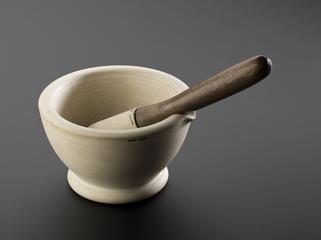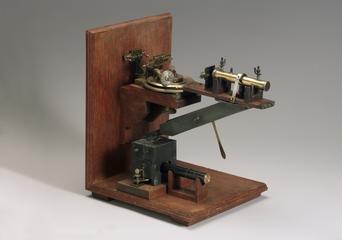
Wash bottle for alcohol










Wash bottle for alcohol. Alcohol is used as a solvent to clean chemical glassware and wash bottles are still used in laboratories in the early-twenty first century. This wash bottle was part of the 1876 Special Loan Exhibition of Scientific Apparatus. This loan formed the foundation of the Science Collections at the Science Museum.
The bottle was part of the 1876 Special Loan Collection of Scientific Apparatus, an exhibition that drew over a quarter of a million visitors in August 1876 and that helped catalyse the formation of a Science Museum separate from the Victoria and Albert Museum.
In the nineteenth century, Germany led the world in organic chemistry, a fact that is reflected by the name of the solvent being etched on the bottle in German.
Details
- Category:
- Experimental Chemistry
- Object Number:
- 1876-267
- Materials:
- glass and rubber (unidentified)
- Measurements:
-
overall: 285 mm x 110 mm x 90 mm,
- type:
- bottle
- credit:
- Warmbrunn, Quilitz and Company




